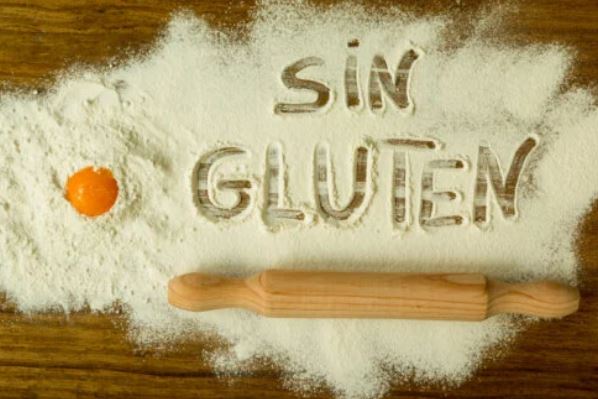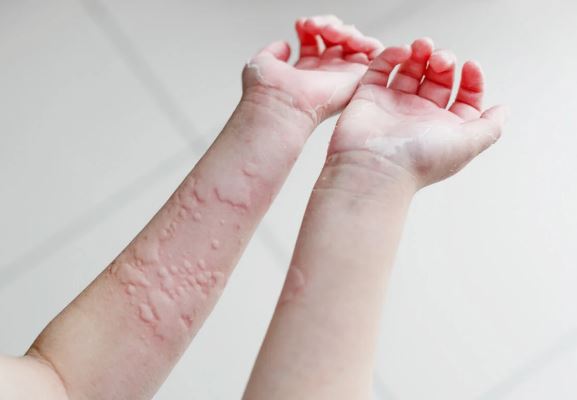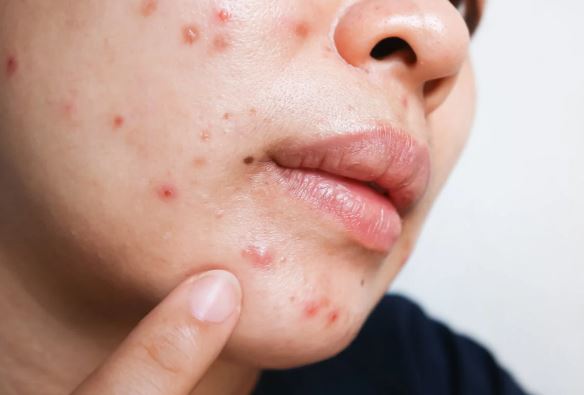Have you ever wondered what influence gluten intake can have on the appearance of your skin? Dermatitis, psoriasis, eczema, and keratosis are some conditions that are related.

Have you ever wondered what influence gluten intake can have on the appearance of your skin? While there is sufficient evidence that this protein can cause intestinal problems, it is not always known that it can also have a negative dermatological impact.
It should be noted that gluten is not present as such in grains (wheat, oats, rye, barley: TACC), but is formed when they come into contact with water. Thus, it is possible that there are other foods that by nature do not contain it, but that due to improper handling are contaminated with it.
In relation to this issue, it is not that gluten generates problems in all people, but that there are those who are sensitive to it because they are celiac, that is, they are not able to digest protein. In them it is common for skin symptoms to appear after eating food with TACC. Now, what is the impact of gluten intake on the skin of people with these conditions?
Gluten-related skin conditions
The skin conditions that are associated with gluten intake are several. Specifically, they range from itchy rashes to hair loss. However, in most cases they may be due to an autoimmune nature or due to a genetic component.
Regarding this issue, several investigations suggest that some of the conditions that have a correlation with the intake of gluten in people with celiac disease or intolerance are those that are detailed below.
1. Urticaria
Hives are a condition that is manifested by red, itchy bumps on the skin. Thus, after eating gluten, an allergic reaction occurs because the body releases chemicals (such as histamine), responsible for inflaming the skin.
In fact, there are people who are celiac and who only manifest symptoms on the skin, but who are unaware that this pathology can generate this problem.

Some celiac patients have skin problems that are explained by their gluten intolerance.
2. Dermatitis herpetiformis
Eating gluten may cause a condition called dermatitis herpetiformis. It is also called Duhring-Brocq disease and it is an inflammatory and autoimmune disorder.
The clinical signs that show this problem are the presence of multiple intensely itchy skin lesions that take various forms; they can appear in groups or spread out. Likewise, they tend to be chronic and recurrent.
It can cause papules, vesicles and blisters with intense itching that leads to excoriations or hyperpigmentation of the skin. They generally appear in areas of friction, such as the knees, buttocks, elbows, scalp, lower back and back of the neck, respecting an asymmetrical distribution.
3. Ichthyosis vulgaris
Ichthyosis vulgaris is an autosomal dominant genetic skin condition. The main symptom is peeling of the skin, so topical creams or ointments are used for its treatment.
In a study published in the journal Integrative Medicine: A Clinician’s Journal in 2015, it was exposed that a patient with this condition presented sensitivity to certain foods, including gluten. It is also mentioned that there were improvements in the appearance of the skin after the elimination of the identified products.
4. Dry skin
Since people with celiac disease or gluten intolerance have intestinal damage after ingesting this protein, it is evident that they will have difficulty absorbing nutrients. Since the body cannot obtain the vitamins and minerals necessary for healthy skin in these cases, dryness is common.
5. Psoriasis
Psoriasis, a condition represented by the presence of thick, scaly red plaques on the skin, shares a strong link with gluten consumption. It is not clear if ingestion causes psoriasis or if people with this condition are more likely to have celiac disease.
However, some patients who suffer from it may find that their skin symptoms improve when they adopt a gluten-free diet, regardless of whether they have a positive diagnosis of celiac disease.
6. Eczema
This condition is identified by an itchy rash that in turn causes whitish, scaly patches on the skin. It is common in children, but adults can also experience it.
Although the main treatment is topical corticosteroids, in some people a gluten-free diet can also help. It would be a complementary approach.
7. Alopecia areata
Alopecia areata is an autoimmune condition in which the body itself attacks the hair follicles, causing the hair to fall out. It has been linked to celiac disease, although it is not clear that this occurs as a result of gluten intake.
According to a scientific article published in 2012, people with celiac disease and alopecia areata discovered that their hair grew back after adopting a gluten-free diet. However, the growth happened randomly.
8. Keratosis pilaris
It is not entirely clear that celiac disease causes keratosis pilaris. This is a skin condition that causes bumps similar to goose bumps to form, especially on the back and upper arms.
However, there are patients who report that the appearance of the skin improves after adopting a gluten-free diet. On the other hand, it is important to mention that this condition is common in those who have eczema.
Can a gluten-free diet eliminate these conditions?
In all the cases mentioned, a gluten-free diet could improve these conditions. A particular case is that of acne and we will analyze it now.
There is no direct association between the presence of acne and gluten intake. However, people who are not diagnosed with intolerance or celiac disease who notice improvements in their face after stopping foods with TACC may actually be for another reason.
In these cases, it is likely that those who observe that their acne decreases is as a result of the elimination of foods that, in addition to containing gluten, also have a high percentage of sugar and fat. All those products that are made up of these nutrients have inflammatory potential.

Acne is a common dermatological condition that can improve with some dietary changes, although not specifically with TACC products.
How to take care of the skin with a healthy diet?
According to nutrition professionals, the optimal thing is to provide the body with adequate nutrients. In fact, complex vitamins B, A, D, E, C, K, and minerals like zinc, magnesium, and selenium are essential for healthy skin.
Thus, to ensure their consumption, the following foods must be incorporated:
Fruits and vegetables.
Vegetables.
Whole grains.
Nuts.
Seeds and their oils.
Olive oil.
Skim meat, eggs and dairy.
Quitting gluten can improve skin
Indeed, giving up gluten can improve the appearance of the skin, but in people who have a sensitivity to this protein or who are diagnosed with celiac disease. It should be remembered that in these cases consumption triggers an inflammatory reaction that manifests itself at the intestinal level and in the epidermis.
Likewise, excluding foods with gluten can bring benefits, since with ingredients such as wheat, bakery products are made that provide high levels of added sugars and fats, which is not advisable for health.





